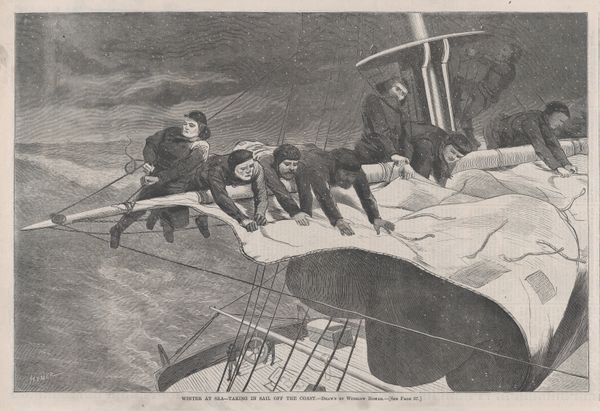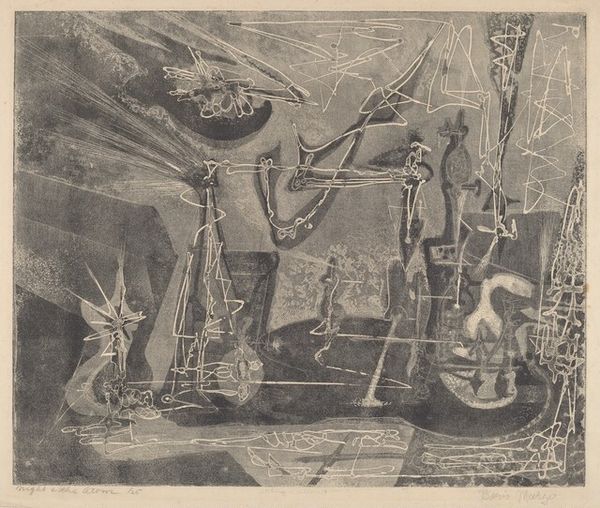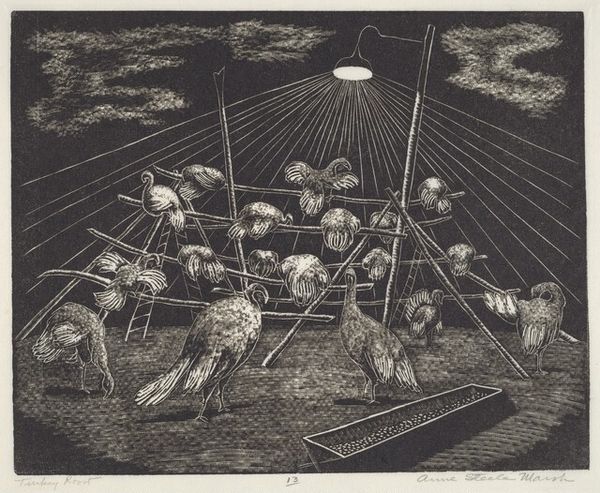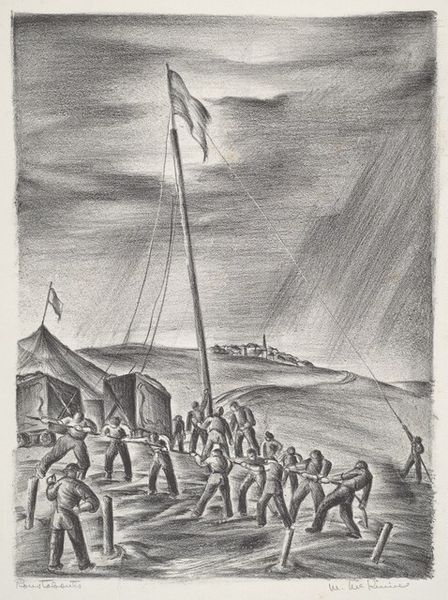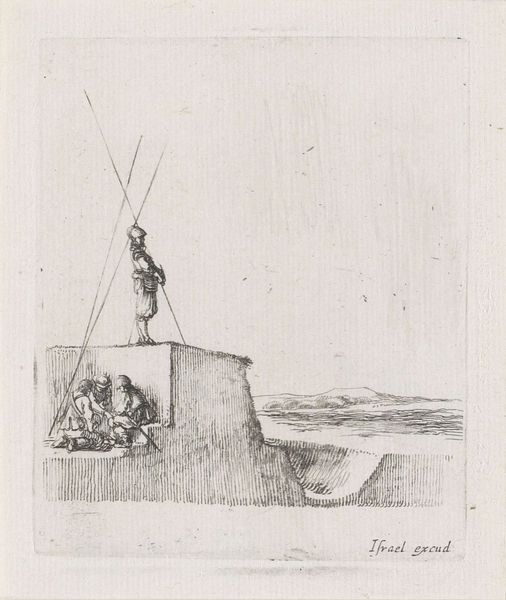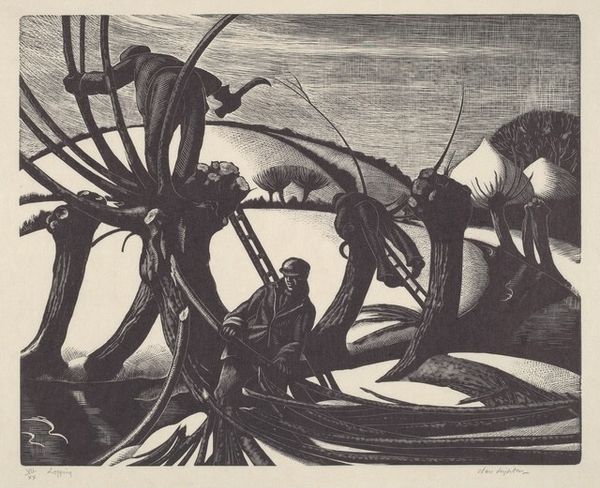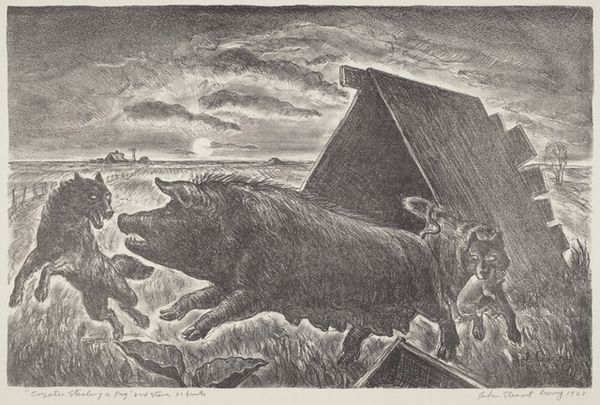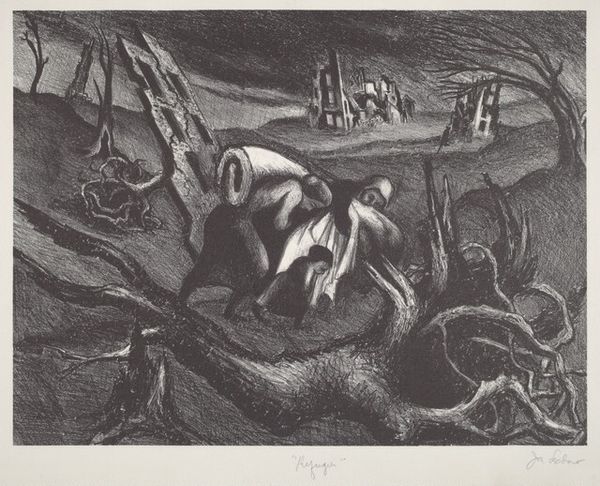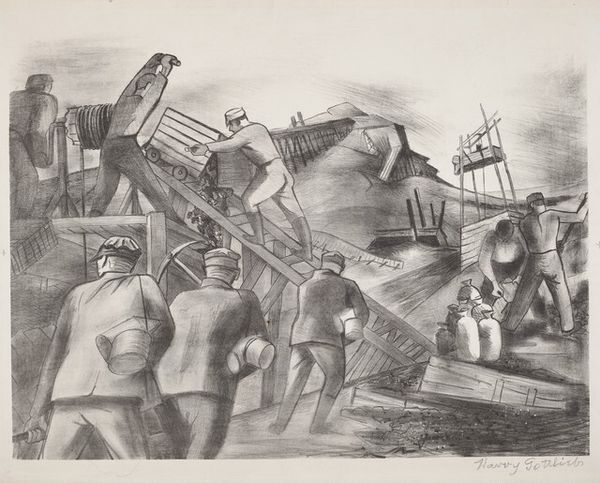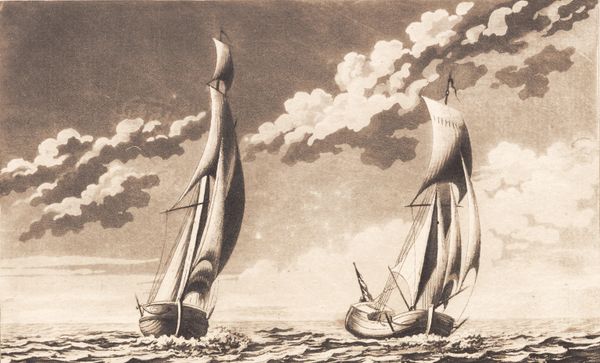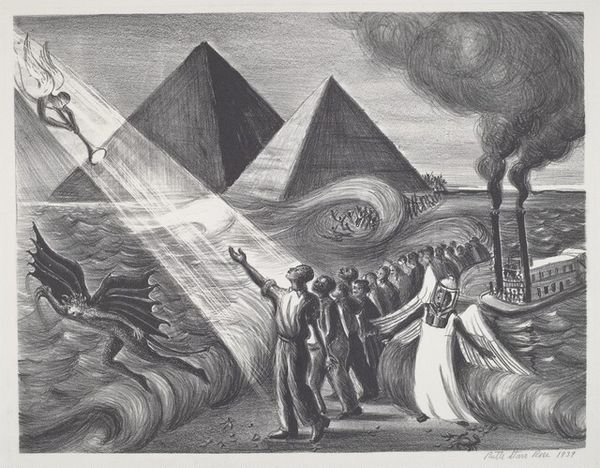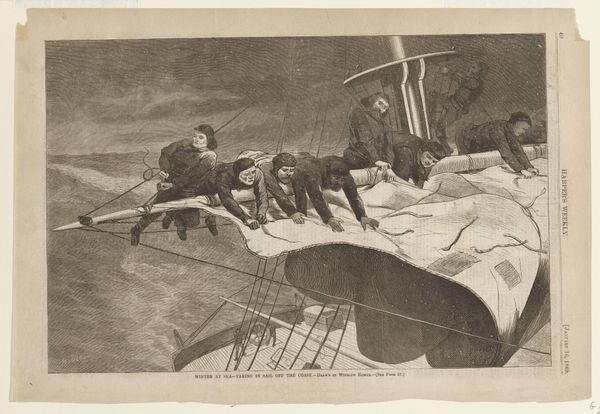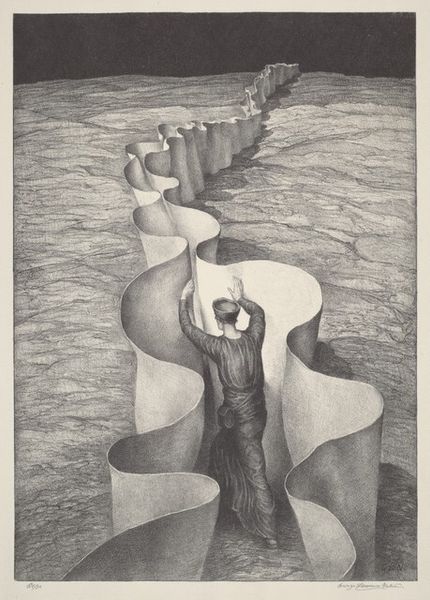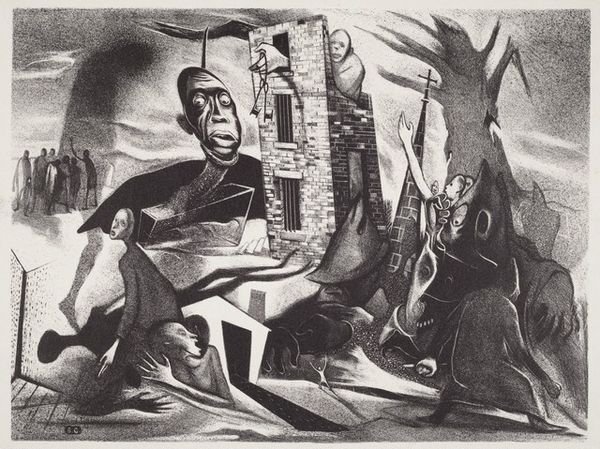
drawing, print, graphite
#
drawing
# print
#
social-realism
#
pencil drawing
#
geometric
#
graphite
#
history-painting
#
graphite
#
realism
Dimensions: image: 335 x 426 mm sheet: 404 x 509 mm
Copyright: National Gallery of Art: CC0 1.0
Editor: We're looking at "December 7, 1941," a graphite drawing and print made around 1941 by Herman Volz. The angular forms and grayscale tones create a feeling of stark tension. What strikes you most about this piece? Curator: The process of creation here is critical. It's a drawing reproduced as a print; it speaks to accessibility and dissemination of information, or perhaps propaganda, in the WWII era. Notice how the artist utilizes cheap and readily available materials—graphite and paper—to depict such a pivotal, history-altering moment. Editor: It seems to suggest that even everyday materials can bear witness to significant historical events. How does the materiality influence your reading of the scene? Curator: The limited tonal range achievable with graphite mirrors the uncertain and dire atmosphere of the time. This wasn't a glorious technicolor victory; it was a devastating surprise attack. Volz's choice eschews valor, presenting instead the raw, gritty reality. We have to also consider who this artist was, what his social milieu was, what resources were at his disposal to create it. Was this intended as fine art, or was it always envisioned as a mass-produced image? Editor: It certainly makes you think about the intended audience and the impact it aimed to create. Was art of this style usually state-funded or independently made? Curator: Precisely! Understanding its origins and modes of distribution would drastically shift our interpretation. Was it a government-commissioned print designed to stoke patriotic fervor, or was it created in opposition to such efforts? The means of production directly inform its meaning. Editor: I hadn’t considered the economic factors so explicitly, and how it impacts artistic interpretation, and propaganda potential. Curator: Seeing the materials and process as central to its meaning adds a rich layer of understanding. Every choice made, from subject to medium, has embedded within it its historical moment.
Comments
No comments
Be the first to comment and join the conversation on the ultimate creative platform.
